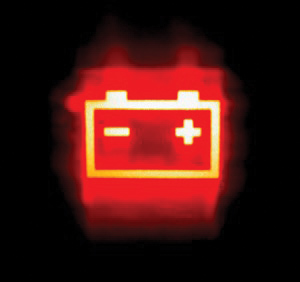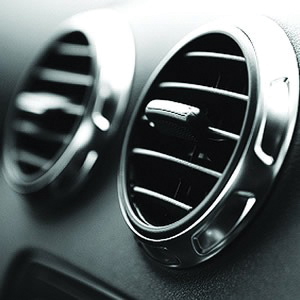
The Car Care Council |
 |
EXTREME SUMMER HEAT CAN BURN UP CAR BATTERIES
 |
This summer’s extreme temperatures can destroy a vehicle’s battery. The Car Care Council advises vehicle owners to have their cars’ batteries tested periodically and replaced, if necessary, to avoid being stranded. Excessive heat and overcharging shortens the life of a battery. Heat causes battery fluid to evaporate which then damages the internal structure of the battery. A malfunctioning component in the charging system, usually the voltage regulator, allows too high a charging rate which will eventually destroy a battery. |
“When most motorists think of dead batteries that cause starting failure they think of severe winter weather, but summer heat is the real culprit,” said Rich White, executive director, Car Care Council. “Many battery problems start long before the temperatures drop. A few simple steps now can help you avoid the cost and inconvenience of a breakdown later.”
To get the most life out of a battery the Car Care Council suggests the following:
KEEP YOUR COOL IN HOT SUMMER CARS
When it’s hot outside, one of the last places you want to be is sitting in traffic without a properly functioning air conditioning (A/C) system. To help avoid this uncomfortable situation the Car Care Council recommends having your A/C system checked annually to make sure it is functioning at its peak performance level when the temperatures are soaring.
“Making sure your A/C system is working properly will give you the peace of mind knowing that your vehicle will keep you cool and safe during the summer,” said Rich White, executive director, Car Care Council. “Not only are high temperatures harmful to the body with prolonged exposure, but they can provide unnecessary wear and tear on a vehicle.”
A vehicle’s heating, ventilating and air conditioning system (HVAC) keeps the interior cabin comfortable in any season by providing the right temperature and humidity level. Typical A/C service consists of the following steps:

WITH AIRFARES SOARING, DRIVING IS THE WAY TO GO
 |
 |
With airfares on the rise, a road trip is the way to go, says the Car Care Council, as the cost of flying for a family of four is about four times more costly than driving.
The increase in airfares is not insignificant. USA Today reports that “summer fares for trips in the U.S. are up three percent on average over last year and 18 percent compared with 2010 according to booking site Travelocity.” On the other hand, CNN Money reports that “prices at the pump began ticking lower in April, and it appears they’ll continue falling as the driving season continues.”
“Because flying is getting more expensive and gas prices are heading lower, more travelers are finding that driving their own car is the better alternative,” said Rich White, executive director, Car Care Council. “The bottom line is that travel by vehicle costs less, is more convenient and is not as stressful as flying.”
The Car Care Council compared the cost of flying vs. driving based on a family of four traveling 1,000 miles round-trip and found the average costs to be $1,441 and $350, respectively:
By air: A family of four traveling by air will spend an average of $1,441 (or $361 per ticket), based on 2011 third-quarter statistics from the Bureau of Transportation Statistics. Add to this checked baggage fees, transportation to and from the airport and/or parking.
By vehicle: Even if gasoline prices were to increase to $5 a gallon, the cost for a family of four traveling by SUV would be about $350. This number includes the cost of gasoline plus tire wear and maintenance based on the American Automobile Association’s (AAA) vehicle operating costs. Currently, gas prices average near $3.85 according to AAA’s Daily Fuel Gauge Report with many areas higher than $4.00 per gallon.
In addition to the obvious direct cost savings, going by car offers a number of advantages over flying including:
 |
The brakes are the most important safety system on your vehicle, and the entire system relies on the hydraulic power of brake fluid to function properly. Modern vehicles use hydraulically actuated brakes which work by using fluid to transfer brake pedal pressure from the master cylinder down through the lines and eventually on to each individual brake. In reality, the system is not as complex as it initially sounds. |
Brake fluid is a very specific chemical blend and is extremely resistant to boiling and breaking down. Over time, however, air and moisture can be introduced into the system compromising your safety and the effectiveness of your brakes. This usually translates to the driver as a spongy or soft brake pedal. Fortunately, the fluid is relatively inexpensive and easy to change, and most shops won’t charge over an hour labor for the procedure. We recommend bleeding your vehicle’s brakes every two years or whenever brake pedal feel changes.